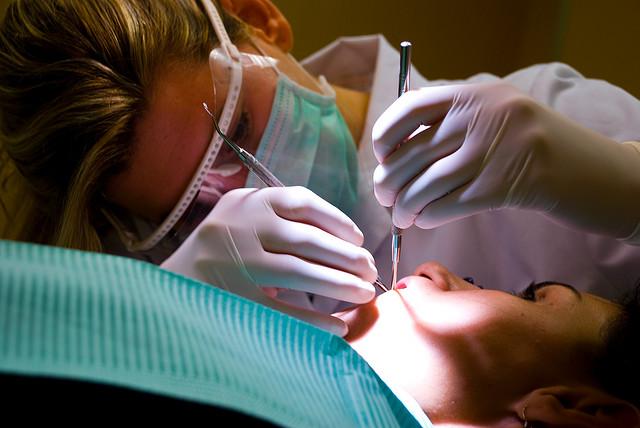New Frontline documentary finds that one in three Americans can’t afford a dentist
About 100 million people the U.S. don’t have dental insurance. (Photo by Conor Lawless via Flickr CC.)
A new Frontline documentary takes a look at America’s broken dental system and chronicles the hardships that a third of Americans who can’t afford a dentists often face.
The documentary, Dollars and Dentists, airs Tuesday night on PBS stations. Frontline correspondent Mike O’Brien says it’s an issue that remains left out of the on-going health care debate. And for many dentists, that’s how they like it.
“The idea of being more integrated into the larger health care system is an anathema to many dentists,” O’Brien said. “They prefer to be separate.”
O’Brien says low Medicaid reimbursement rates help explain why dentists might prefer to be on their own. Many don’t participate in the program because of the low rates.
Cesar Sabates, president of the Florida Dental Association, says he once considered becoming a Medicaid provider. He dropped the idea after realized that the program would pay him about 20 percent of what he normally charged.
“I thought to myself, ‘this doesn’t make any sense,'” Sabates said. “It’s not the dentists’ fault.”
About 100 million people the U.S. don’t have dental insurance. Without coverage, nearly one million Americans go to the emergency room each year for dental pain.
Although most emergency rooms are well equipped to handle a broken leg, there’s little they can do when a person walks in with a toothache.
Frank Catalanotto, a pediatric dentist at the University of Florida in Gainesville, says that the most emergency room doctors can usually do is prescribe antibiotics to control the infection and pain killers to stop pain.
“A couple of weeks [later] that same tooth flares up again,” he said.
Because many dentists refuse to accept Medicaid, low-income Americans often put off treatment as long as they can.
O’Brien tells the story of a five-year-old girl who showed up at the emergency room at the University of Florida Hospital. Four or five of her teeth had cavities or needed to be pulled.
“It cost the taxpayers of Florida $18,000 to fix those teeth,” O’Brien said. “That’s obviously not an efficient way to do it.”
A simple way to fix the problem, O’Brien says, is for states “to up the ante.” He says they should increase their Medicaid reimbursement rates for dentists to encourage them to accept more low-income patients.
“At least we’d get the kids in the chair,” he said.
But upping the ante has its downside. When Connecticut increased its reimbursement rate for dentists, corporate dentistry chains moved in. O’Brien says many of them pushed expensive products, such as crowns, more aggressively than local dentist offices to capitalize on the growing low-income market.
The Frontine investigation found that the same business model that made corportate dentists accessible to poor people also pushed many of those patients into debt. People complained about being overcharged or given unnecessary treatment.
Our coverage reaches millions each week, but only a small fraction of listeners contribute to sustain our program. We still need 224 more people to donate $100 or $10/monthly to unlock our $67,000 match. Will you help us get there today?
